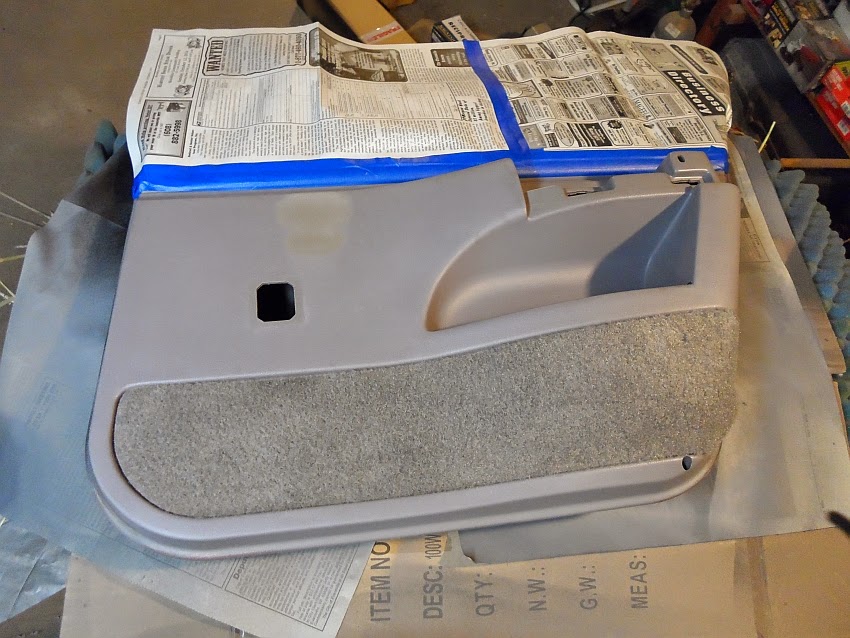I've mentioned the Might Caprice™ in several posts, but I've never shown it. Since it's for sale, there's no time like the present. Here's the text of the Craigslist ad I posted:
Do you love the roar of an American V8? Do you need a car to drive this
winter? Is your new favorite movie Lets Be Cops? Then the Mighty
Caprice is the car for you. It's a 1994 Chevrolet Caprice 9C1 police
package. This thing is built like a tank, and is the ultimate winter
car. It's packed with too many features to list, but I'm going to try.
It's got an LT1, 350 cubic inches of fire breathing smallblock fury.
Runs great, though the pistons slap a lot until it warms up(it's a 90's
GM, so that's to be expected). I've always used Mobil 1 oil in it, and
can provide the most recent used oil analysis showing the engine's
condition.
Transmission was rebuilt around 60K ago, and has a 2500rpm stall converter for great off the line acceleration.
Water pump, distributor, and fuel pump were replaced at some point.
Factory posi works good in the snow, not so much on dry roads.
Brand new radiator. Seriously, this radiator doesn't have 50 miles on
it. Old broken radiator included at no extra charge(A $10 value at the
scrap yard).
According to the Compnine vin decoder, this car is 1 of 32 identically
optioned cars built(Take that Mopar boys!). The combination of dual
spotlights and side molding delete is very rare making this car a true
collectable.
Speaking of the dual spots, they both work. Great for shining deer, or spying on the neighbors.
It's got cop springs, cop shocks, and cop sway bars. They make this 4400Lb boat handle like it's only 4300Lbs.
4 wheel disc brakes, only available on Cop cars and Impala SS's. ABS
doesn't work, but that's OK because the brake calipers are painted red
and have Corvette stickers on them(just stickers, they're not actually
from a Corvette). Front rotors replaced last summer, rear rotors
replaced a few years ago.
AC doesn't work, but who needs AC when 3 of the 4 windows roll down.
Power locks work, but you'll never need them because no one is going to
steal your factory AM/FM radio. Included at no extra charge is the
finest $60 radio Wal-mart had to offer in 2008(with proper wiring
adapter).
Trunk lid spoiler is made from a genuine Nascar hood section, which adds
like 200 HP. It's also good for an extra ½ mpg. Also included is the
original, undrilled trunk lid if you decide the spoiler is just too
awesome.
Tires are Bridgestone Blizzaks, literally the best snow tires money can
buy. They even have some tread left on them. Comes with two spare wheels
with very questionable tires.
Don't trust your friends? No problem, this thing has anti-stab seats(cop
seats have steel plates in them to prevent stabbing through them).
It floats down the road, feels like you're going 100 MPH when you're
standing still. Though you could actually be going 100. Hard to say
because the speedometer only works sometimes.
Body is covered in carefully placed "speed dimples" for more
performance, just like a golf ball. Most people mistake them for regular
dents.
Body has many lightening holes to reduce weight, disguised as ordinary rust.
Much of the rust has been spray painted over. No one will ever know it's
there unless they direct their eyes in the general direction of the
car.
It's got Thrush Welded mufflers for that awful Flowmaster sound without the awful Flowmaster price.
Airbox has a K&N sticker on it, though no K&N filter is
included. It's just a sticker, but I read on the internet that stickers
add like 50 HP.
Dashboard is from an Impala SS, because chicks dig Impalas.
Comes with a full tank of gas, a $60 value.
I'm asking $800, and I'm firm on price. It's probably worth more than
that because of the LT1, but I don't want to haggle. In all seriousness,
though it's banged up and rusty, it's actually a decent car. You won't
find a better car for the price, and you won't find a cheaper V8
anywhere. It's been very reliable for me and was my primary driver until
the original radiator failed. Fun to drive in the snow, and I've never
been so stuck I couldn't get myself out. For an extra $300, I'll throw
in a set of nearly new Cooper Cobra tires on rims. It needs nothing and
runs and drives as is, though it cranks slow so if I were going to keep
it I'd probably replace the battery or the starter. I work odd hours, so
I prefer e-mails, followed by texts, and phone calls last. Thanks,
Jeff.
There you have it ladies and gentlemen, the Mighty Caprice™ in all it's glory. It's banged up, and rusty, and has been my faithful steed for the past decade.


















































